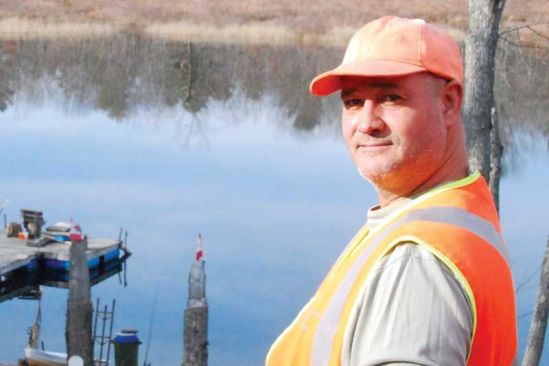Jeff Green | Apr 19, 2017
It’s been almost 4 years since Bob Srigley was shot by police on the porch of his trailer on Arden Road.
We know a few things about what happened, but only a few. He was armed with what the Special Investigations Unit report into his death described as a weapon that appeared to be a “scoped rifle” but turned out to be an air gun.
The report also says the following: “while still holding his rifle, which was pointed at the officers, the man turned around, began walking toward the front porch of his residence, and stopped at the porch stairway. The man did not heed repeated commands to drop his weapon.”
The report does not say what part of Srigley’s body the bullets hit.
While the The SIU report did not say where he was hit or whether his gun was still pointed at police when he was shot, it did say that Mr. Srigley’s actions as soon as police arrived at his house are what really precipitated his death.
“The moment the man ran naked screaming and yelling to the picnic table in his yard and picked up his air rifle - which appeared to be a lethal high powered scoped rifle with a flared barrel - and pointed it at the officers, he initiated the sequence of actions that led to his death,” it says.
A Coroners inquest into this matter will take place in Sharbot Lake starting next Monday. It will not deal with whether anyone should be held accountable for Mr. Srigley’s death. That matter was settled by the SIU and will not be revisited.
The point of the inquest is to provide an opportunity for the public to learn more about what happened on that hot July afternoon in 2013, to provide clarity for members of the public.
Knowing where the bullets entered Mr. Srigley’s body is something that the public has a right to know.
Aside from that issue, another question arises. Should police have been the only first responders on the scene?
As the SIU report itself indicates, and more of this will hopefully come out during the inquest, Bob Srigley had major issues with the police. He had accused an OPP officer of beating him 18 months before his death, and after an investigation a police investigator from Kingston concluded there was no chance of conviction in the case. He continued to battle with police, and his own personal demons, in the run up to the confrontation that led to his death.
The call came in to police on that day because Srigley had threatened to kill himself. Everyone in the local OPP detachment knew Mr. Srigley had major issues, yet they did not call in his social worker or his mental health worker to come with them. That may not have been an option according to the OPP operational protocol of the time, but those protocol’s are changing as the result of investigations into a number of other incidents across the province.
Mr. Srigley was known to social and mental health workers in the area. He contacted this paper many times, often to talk about his issues with the OPP. If the inquiry can look at one issue alone, it would be the response to the 911.
In retrospect it is clear that sending in 6 officers put those officers at risk, and we know what the consequences ultimately were for Mr. Srigley.
We don’t know about the impacts on the officers who responded to the call, particularly to the two who discharged their firearms, but they have also paid and are still be paying a price for a decision to send in law enforcement to deal with the mental breakdown in a man who had professed a violent hatred on for police officers.
We will never know if the outcome of the Srigley case would have been different if a trained crisis worker had been working with the OPP on that day in the summer of 2013.
But we do know a 911 call was made because a man was in need of help, and instead of getting that help he ended up dead.
The matter is of particular interest to The Frontenac News because the 911 call was made from our office.
More Stories
- No Winner Yet in Catch The Ace But Fundraising Target Met
- South Frontenac Food Bank Opens Second Location in Battersea
- Sharbot Lake Pentecostal Church Anniversary - 1925-2025
- Frontenac Holistic Health Fair - September 20 At Storrington Centre
- Odd Year For Real Estate - But Sales Are Steady Year Over Year
- 193rd Kingston Fall Fair
- Kim Phuc - the Napalm Girl - To Visit Flinton In November
- South Frontenac Council - September 2
- Sticker Shock - EV Charging Station To Cost North Frontenac Township
- 30th Anniversary Verona Car Show

